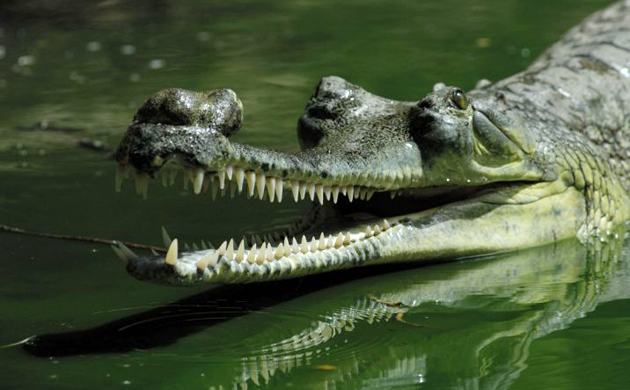 |
| Image from The Guardian |
The Gharial, or Gavial2 (Gavialis gangeticus) is amongst the largest crocodilians in the world, rivaled only by the Saltwater Crocodiles of Northern Australia. Gharials can reach up to about 21 feet and weigh approximately one ton. They inhabit fast moving rivers in the Indian subcontinent, where the purpose of the long, thin snout becomes apparent. While many crocodilians are ambush predators (think of the Animal Planet footage of one leaping out of the water for a wildebeest), Gharials rely mainly on fish for their diet. A thick snout like an alligators would produce large amounts of drag, but a long, thin snout can snap sideways, grabbing unsuspecting catfish.
Not that they eat only catfish, but birds, crabs, and small mammals are eaten if they can be caught. This website mentions that the people buried by Hindu funeral tradition in the Ganges river frequently end up in Gharial’s stomachs. By my thinking, this is a good thing, reminding us that, as much as we try to deny it, we’re still part of the food chain.
Gharials have a bit of their own success story, but not quite to the point of the Lake Sturgeon or the Bald Eagle. At one point, in the 1970s, there were about 70 of them left, due to poaching3, and habitat destruction as the population of India increases. Now, after lots of captive breeding and introduction, there are about 2,500 of them in the wild. This still isn’t a big population, but it’s certainly a start.
1Which is why I mentioned it here, even though it’s not what the post is about.
2I’ve always called them Gharials, so I have no clue why I searched for “Gavial”.
3Their snout is long, with a bulb on the end. Of course people thought it was an aphrodisiac.

No comments:
Post a Comment